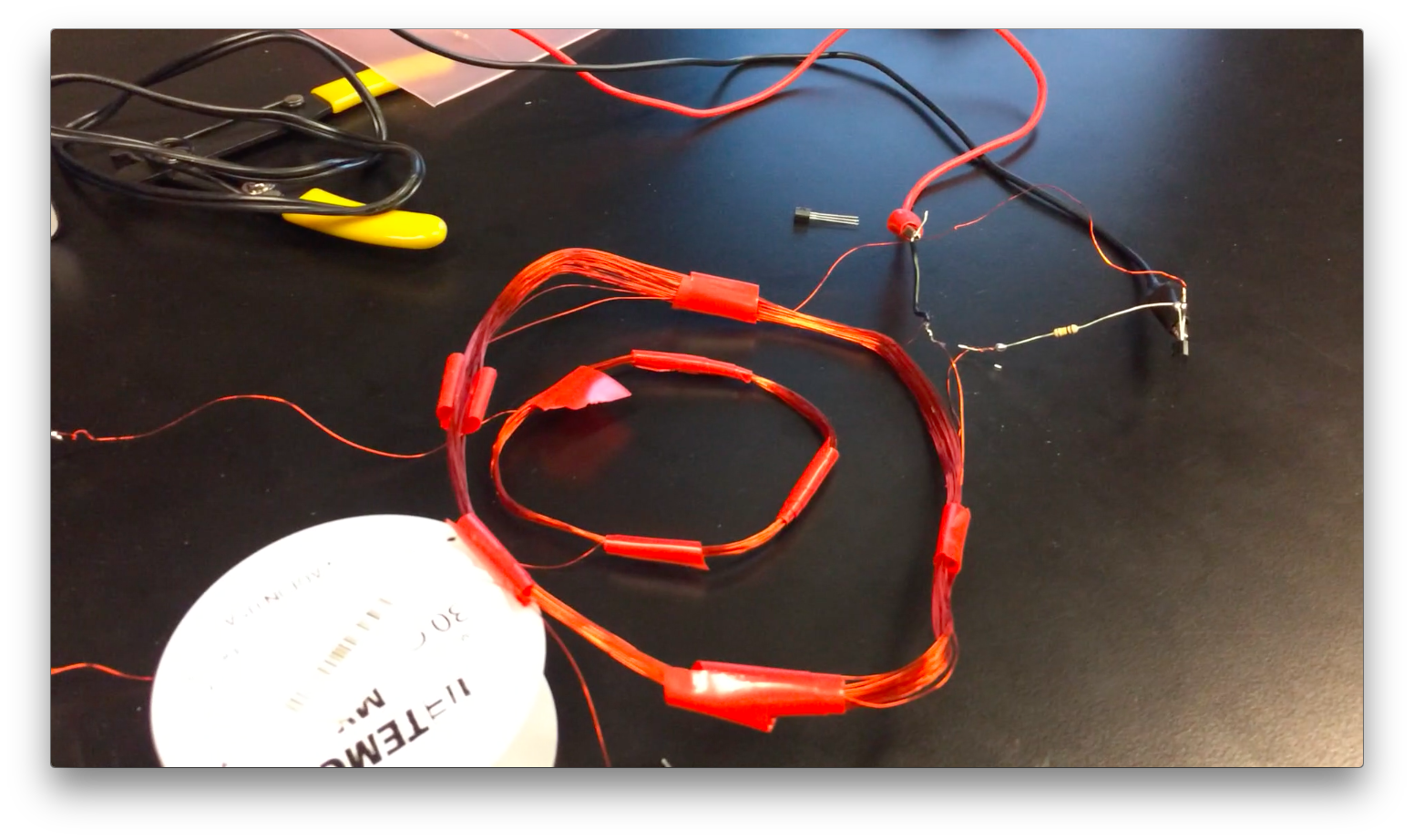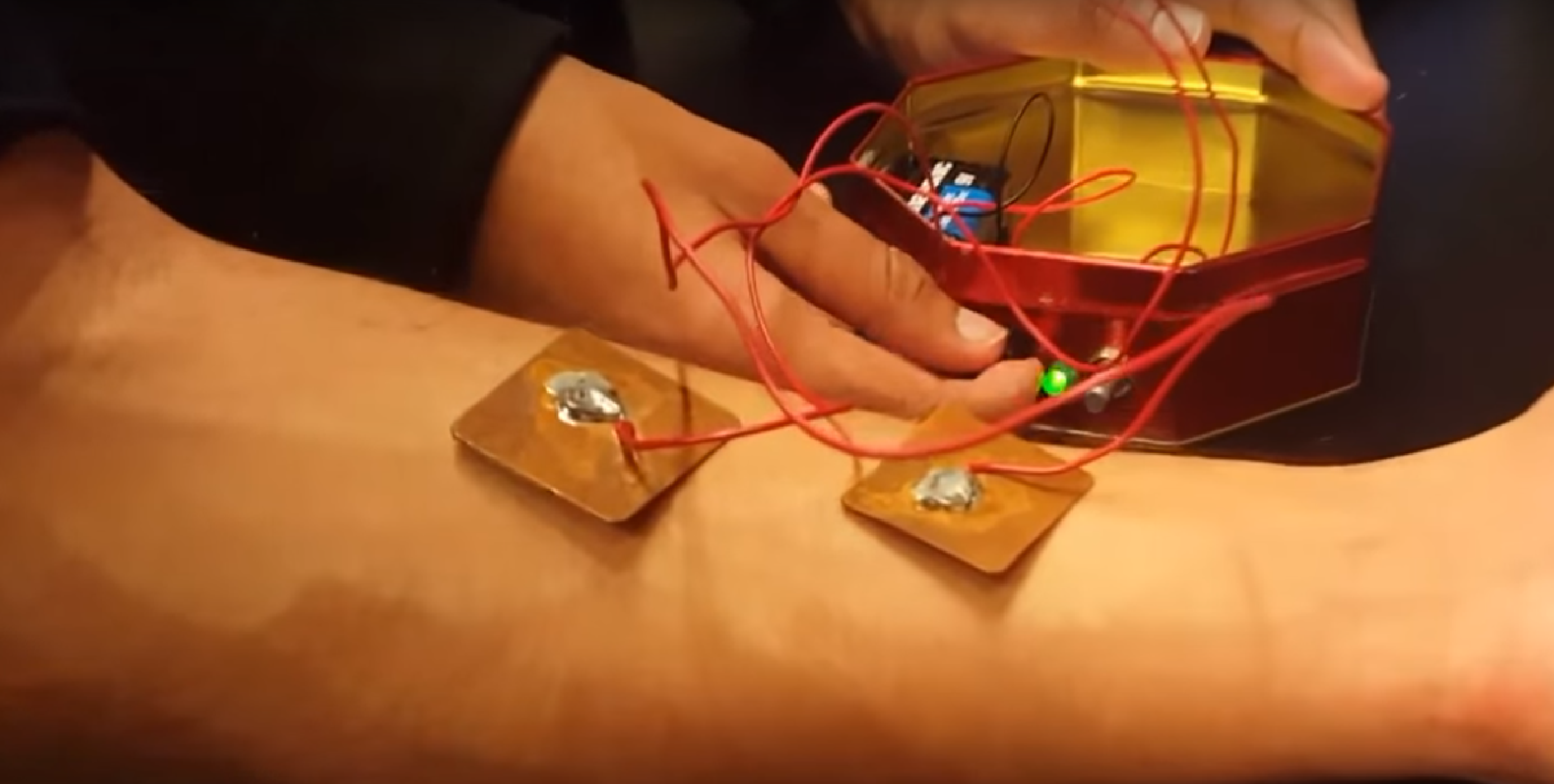EID101D: Nikola Janjusevic, DongKyu Kim, Varouzan Knouni, Justin Jose #THE Z-PACK Important links found at the bottom of the page
Our engineering design group aimed to find a problem relevant towards world travelers, and be able to market a smart connected device capable of solving this problem for them. We started this approach based purely on conjecture, and our own experiences. However, through multiples instances of research in the field, we've learnt much about the pains of our customer segment. Through new research, we've been able to refine our value proposition, and are continuing to refine and gather new information about the relation of our proposed idea and customer segment.
To understand how we got to our current position "So what now?", continue reading below.
After conducting further interviews in St. Marks, Times Square, and Grand Central we believe we have identified a problem and found a worthy solution. We need to now combine the solenoids together with the TENS unit circuit to finish our minimum viable product. Better aesthetics will come after functionality is proven to be effective.
Our customer segment is defined as follows:
- 18-30 years old
- World Traveling backpacker
We started off tackling this customer segment with the idea of a smart connected keychain. The idea was that this keychain would connect via bluetooth to one's phone, and would alert them if the keychain (or any possesions connected) were left behind. We thought this was a perfect product for a World Traveler, as they have to maintain a budget and schedule, and cannot afford to lose their belongings. However interviews showed how only 1 in 8 people actually cared about item loss.
We conducted our primary interviews with the motive to validate our initial value proposition. We interviewed world travelers in both Grand Central and Times Square, asking what their largest concern whilst traveling was. We discovered that item loss whilst traveling was at the very bottom of their list of concerns. In fact, many of their largest concerns (such as time & money management) were problems that had no room for an SCD (as they were being sufficently solved by simply using a smart-phone). When we reorganized the data from gained from these interviews to only concerns with room for an SCD, we saw that safety was their largest concern.
We decided to tackle this new-found concern of safety in two avenues: safety of person (security), and safety of one's health. These new possibliites caused us to think of two new products: 1) a portable home security device, to take and quickly implement in your hostle or bed & breakfeast. 2) a backpack that implemented a tens unit to relax back and shoulder muscles on whilst traveling.
With these two new product ideas in mind, we headed back to Grand Central to quesiton world travelers on their more specfic concerns of safety. From these interviews, we gathered that 2 in 8 people were concerned about their own security in the places of stay (whilst travling). Others believed their hostels (or other places of stay) were safe/had the necessary precautions to ensure safety already in place. This information deterred us from the portable home security idea.
However, when we asked about back and should pain whilst traveling, we got an overwhelming confirmation of the problem. Interviewees confirmed that their backpacks, and extended periods of sitting on buses or planes, caused noticeable back and shoulder pain. When asked about their current solution to the problem, many said they would like to go to a massage parlor, however they believed that it would be too expensive, and they were to unfamiliar with the country of travel to attempt to find one.
This data collected from the secondary interviews has pointed us in the direction of a muscle pain-relieving product for travelers.
We are currently exploring the idea of combining a backpack with a tens unit. A tens unit is a commonly used physio-therapy device that relaxes muscles through electrical impulses. By merging these two products, travelers could alleviate their muscle pain without having to scratch off any events on their itinterary. This device would be connected to one's phone, so that one could look at the log of the tens unit's use (time of day & time of use), as well as prevent excess use of the device for safety reasons. Our device is also made wireless through the incorporation of solenoids into the backpack and pads used.
We went into Grand Central again to ask travelers about the tens unit and the idea of a backpack with such capabilities. Three out of six travelers interviewed said they would be interested in such a product, on the grounds that the product was wireless (no wires protruding from backpack). Importantly, all those who said they experienced back pains whilst traveling also said they would be interested in the product.
The team went on to create its own website. There, one can find all about what our product is, what does it do, and how does it work. Last but not least, one can sign up for a pre order or join our mailing list by directly clicking on the button “Sign up for the Pre-Order” button located at the bottom of our website.
After the initial verification, we jumped into to lab to begin prototyping our idea. There, we managed to transmit power wirelessly through solenoids we made from 30 awg magnet wire. It was important to do so as what makes our TENS unit special is its wireless aspect.
We also had a functional TENS unit and thus having transmitted power wirelessly through solenoids, we felt that we proved that making a wireless TENS unit is feasible, as the only thing left, was to merge these two already working technologies.
#####After proving that a wireless TENS unit is feasible, the team decided to focus its attention, elsewhere.
The team felt that making a better verification on our product-market fit was more important than completing the final stage of prototyping. That is why we conducted a new set of interviews targeting travelers at Grand Central and on Saint Marks street. This time, we did not only pose questions concerning back and shoulder pain or pitch our idea, but we also showed our website and renderings of our actual product to the people we interviewed. Of the 17 travelers interviewed, 11 of them gave us their e-mails so they can join our mailing list.
We created a sample Kickstarter page where we present our product, our story, our goals and of course our risks and challenges.
###Important links
The product website: http://nikopj.github.io/Traveler-SCD/
The kickstarter: https://www.kickstarter.com/projects/1796559534/102006959?token=311ff912
The launcher video: https://youtu.be/2nGLC8QXn64



